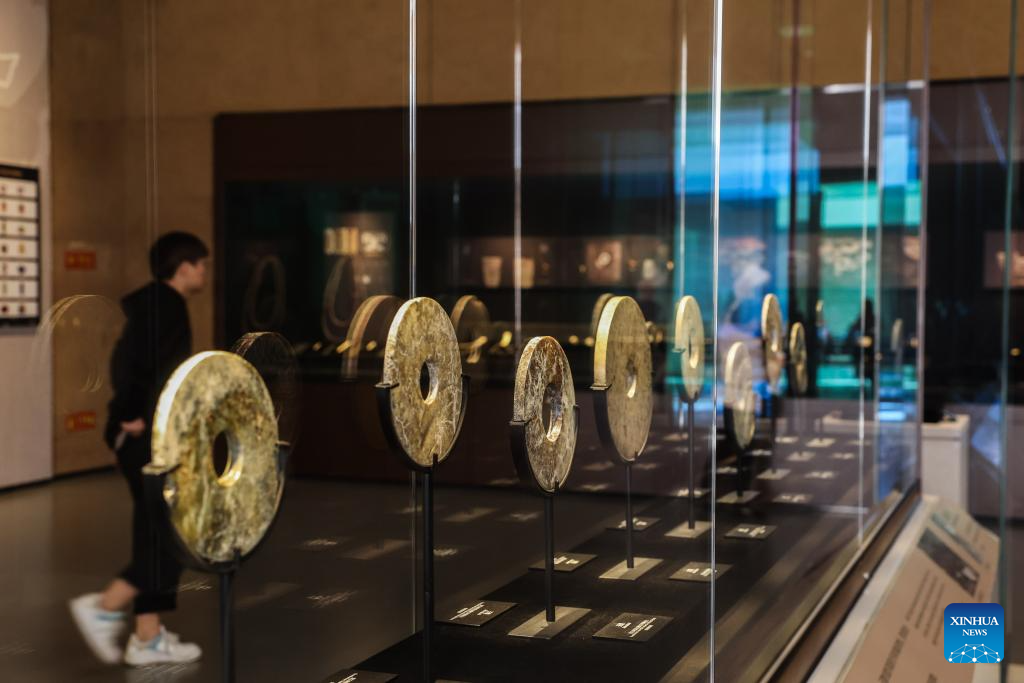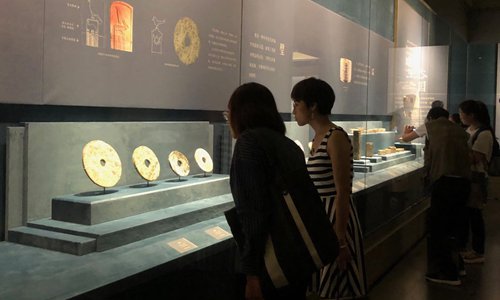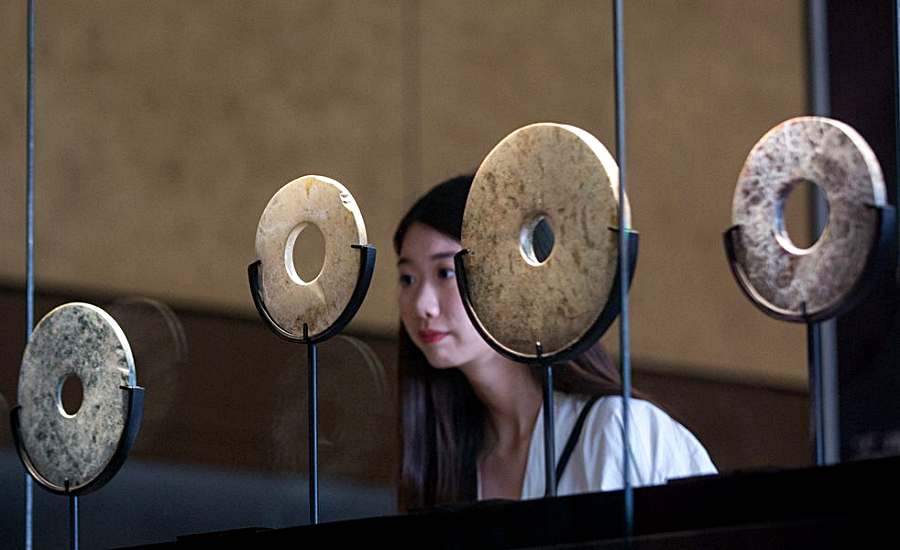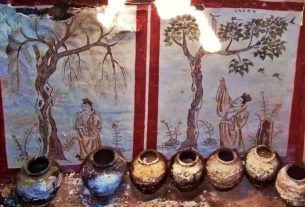![]() Tourists visit the Liangzhu Museum in Hangzhou, capital city of East China’s Zhejiang province, (File Photo)
Tourists visit the Liangzhu Museum in Hangzhou, capital city of East China’s Zhejiang province, (File Photo)
Wed 24 January 2024:
Two archaeological sites have been unearthed in the city of Hangzhou, the capital of east China’s Zhejiang Province, shedding light on stone processing dating back to the Liangzhu civilization around 5,000 years ago, according to a meeting on the province’s archaeological work that concluded on Sunday.
The two relic sites are the Shenjiali relic site in the city’s Xiaoshan District and the Shenjiafan relic site in Tonglu County.
The Shenjiali relic site, spanning approximately 15,000 square meters with an excavated area of 325 square meters, revealed the remains of a sophisticated stone processing plant from the Liangzhu culture, where archaeologists uncovered tens of thousands of stone processing by-products.

“The Shenjiali site is close to mountains, where stonemasons had direct access to extract stones. These artisans held high standards, evident in the archaeological findings that showcase many well-executed semifinished stone grinding artifacts,” said Li Wei, associate researcher of the Department of Cultural Heritage and Museology at Fudan University.

The Shenjiafan site, covering around 40,000 square meters with an excavated area of 1,500 square meters, has revealed over 200 sites, including ash pits, tombs, column pits, and stone hedges. The excavation has also yielded 37,000 relics, predominantly stone products from the Liangzhu civilization.

These artifacts encompass various stages of stoneware alongside raw materials and tools, said Guan Xinyu, the site’s executive leader, adding that the site once functioned as a sizable stone processing area.
The new findings not only provide archaeological evidence for understanding the origin of stone tools in the Liangzhu civilization but also contribute to the overall analysis and research of the production and circulation of stone tools within this ancient civilization, said Wang Ningyuan, an expert at the Zhejiang provincial institute of cultural relics and archaeology.
SOURCE: INDEPENDENT PRESS AND NEWS AGENCIES
______________________________________________________________
FOLLOW INDEPENDENT PRESS:
WhatsApp CHANNEL
https://whatsapp.com/channel/0029VaAtNxX8fewmiFmN7N22
![]()
TWITTER (CLICK HERE)
https://twitter.com/IpIndependent
FACEBOOK (CLICK HERE)
https://web.facebook.com/ipindependent
Think your friends would be interested? Share this story!





